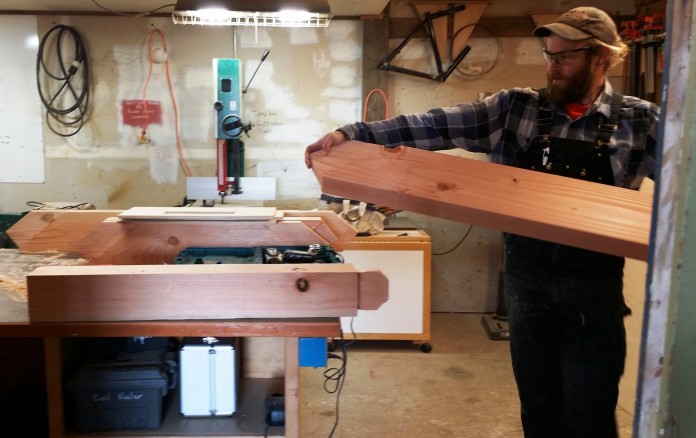Submitted by A-1 Builders & Adaptations Design Studio
One of the best resources for a good building designer is a great carpenter. A great carpenter is a walking encyclopedia of how to get it done in the field and a resource of best practices not to be overlooked when planning gets technical. Mastering the trade takes years of work, but everyone needs to start somewhere.
To find out how some of the best carpenters I know acquired their skill and knowledge, I interviewed several and listened to a couple of podcasts by some regionally renowned craftsman I learned about at a recent trade show.
I list here some of the comments about how people arrived at making a living from the trade. The level of skills of those I interviewed is varied from newly trained to others who have been working in the trade over 30 years. All the people I spoke with are working toward or have arrived at the level of mastering the craft.

The two oldest and most experienced carpenters both had the benefit of being introduced to the building trade in high school where the class actually built a structure. And both continued on to higher education that focused on carpentry skills, one was a community college and one was a trade school. For these older craftsmen, it was clear that they started with a solid base of knowledge and then followed that with years of on-the-job application of their skills and knowledge. A third carpenter also followed the educational track, using a two-year program at a college in Bellingham. Unfortunately, that local program has been discontinued.
There are other paths that have also created some really great carpenters, although the paths are less clearly defined. For some people, it is a family business that supplies the exposure to experience in lieu of formal education. Getting an entry level job and learning carpentry skills on the job was another way people carved out their careers. Good mentors are a common theme for all of the carpenters I talked to. The other common thread for most carpenters was trial and error on their own projects.
The resumes of these people varied widely and I noticed that the modern carpenter has the most success if he has three skills.
- Knowledge and skill working with building materials, including but not limited to wood, is crucial.
- Communication skills foster smoother job site interactions and open the door to learning more skills or passing those skills on to others.
- Technologically literate craftsmen are soon to be the norm. The ability to digitally track work, document solutions and communicate through technology is an amazing plus when combined with the other skills of an experienced craftsman.
Currently acquiring these skills in Whatcom County is more challenging because the local college and trade school courses are not available anymore. I found that Bellingham Technical College ended their building program and Cascade Job Core shifted their carpentry training to an eastern Washington location. The opportunities for high school age people to take construction classes is less than in previous years but options have not completely disappeared. Blaine High School shows a Construction Skills class and Meridian High School has Wood Technology and Computer Aided Drafting classes. Recently added to the high school level education options is a Lynden-based technical educational resource called Technic Training Center directed by John Slagle. The Technic Training Center is a local non-profit organization that provides career and technical education opportunities for high school students, helping them develop skills for future careers in the areas of woodworking, modern manufacturing, and business.
For older students, the options are less but if traveling is not a problem, training can be found at the North Puget Sound Carpenters Training Center in Mount Vernon, and at multiple locations in Oregon at the Pacific Northwest Carpenters Institute, with Portland being the closest center that has apprenticeship classes to choose from.

From a designer’s point of view, I find the drop in available schools alarming because I know how crucial well trained and experienced people are to creating and maintaining buildings successfully. In addition, many contractors failed during the Great Recession, and many carpenters changed career paths, further decreasing the availability of excellent tradespeople.
Having said that, in my own experience with design, I have found that mentoring is one of the best ways that I have received and passed on knowledge in my own field. It would follow that during this downtick of formal education for carpentry that mentoring will inevitably fill the void. Maybe that’s a good thing.









































